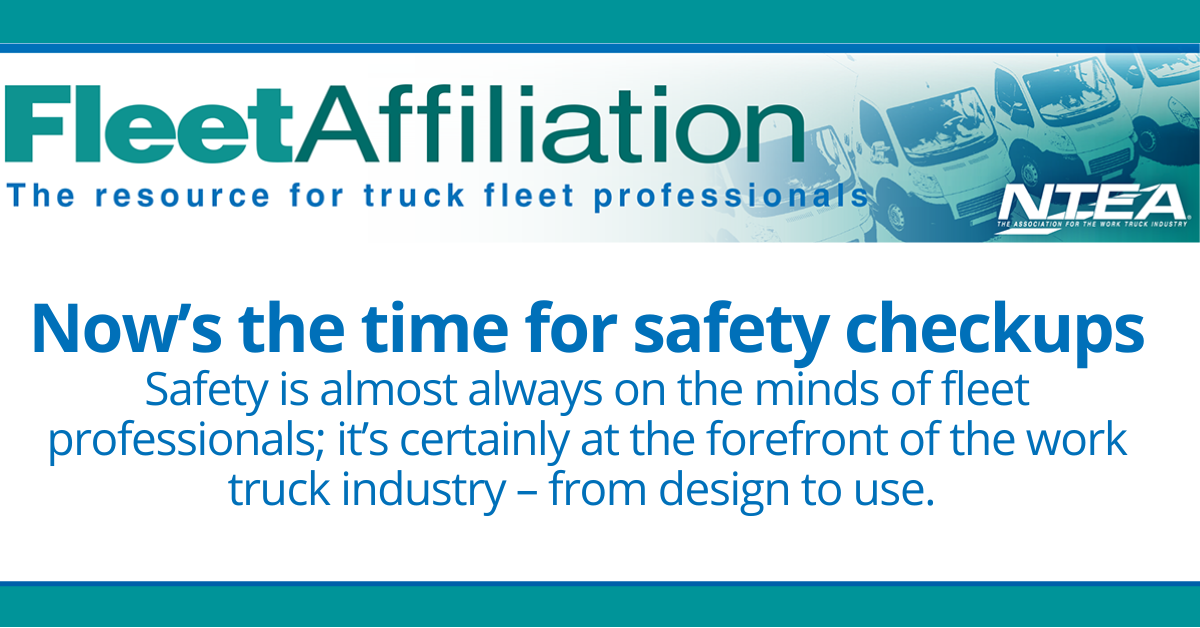
Published in September 2022 Fleet Affiliation.
Safety is almost always on the minds of fleet professionals; it’s certainly at the forefront of the work truck industry – from design to use. Designers are ultimately responsible for providing safe, functional vehicles that help end users do their work.
And what better time is there to conduct a safety checkup than now … as we move into fall, and road conditions are changing for many? Fleet professionals will want to keep compliance top of mind; this includes Federal Motor Vehicle Safety Standards, Department of Transportation regulations, and many state and local regulations.
Often those that originally specified the vehicle will have little control over the actual use once the vehicle is placed in service. However, a few controls can be put in place to minimize the misuse of equipment, and therefore promote vehicle safety.
Weight control – it's difficult
Those in the snow belt know all too well that when snow starts to fall and roads become icy, trucks are filled to the brim with salt. Some operators may not pay attention or be aware of their cargo weight with the varying density of materials loaded; weight may change seasonally. Others may not care, believing they’re exempt from weight regulations (especially during snow events). However, there is no exemption from operating safe and regulatory-compliant vehicles. In addition to exceeding the gross vehicle weight rating, individual components such as axles, tires, and suspension components must be taken into consideration as determining factors.
Space – it will get used
One challenge is having too much space. Many times, trucks can be designed for multi-purpose usage. Take a moment to reflect on what will be hauled. For example, season to season, a dump truck may haul dramatically different materials with varying weight densities. This may include items such as mulch during the spring, and salt and sand during the winter. Spending a few moments to calculate the weight of these materials and marking proper load lines can assist operators in proper loading. This does not guarantee against an overload condition, but it gives the operators the tools and controls they need to properly use the equipment for the purpose in which it was designed.
The human factor – get people involved
Operator involvement can have a direct impact on overall expenses, including maintenance and accident reduction expenses. It is also an excellent tool to ensure they understand the purpose for which the vehicles were designed; this can greatly reduce unintentional misuse of equipment.
Two options can be made available for operators: active and passive programs.
- Passive programs have the benefit of requiring little effort or cost to implement and may often also lead to the acceptance of active programs. This can be as simple as having safety meetings and programs that address proper driving techniques as well as proper loading procedures. Driver awareness information such as posters in meeting and break rooms that show statistics such as cost of maintenance and cost of accidents can be very informative. Most programs that have a positive impact include a hands-on element. While these safety briefings are important, incorporating the hands-on element provides a greater takeaway and allows operators to demonstrate what they have learned.
- Active programs typically have greater results, but also tend to have a higher cost of implementation. These programs usually involve some degree of technology. Devices such as telematics and driver behavior monitoring gives instant feedback and allows operators to self-correct.
In the end, it comes down to the balance of truck design and driver involvement. Remember, operators have an obligation to get their job done and those who design and purchase have an obligation to provide the tools for them to do so.
